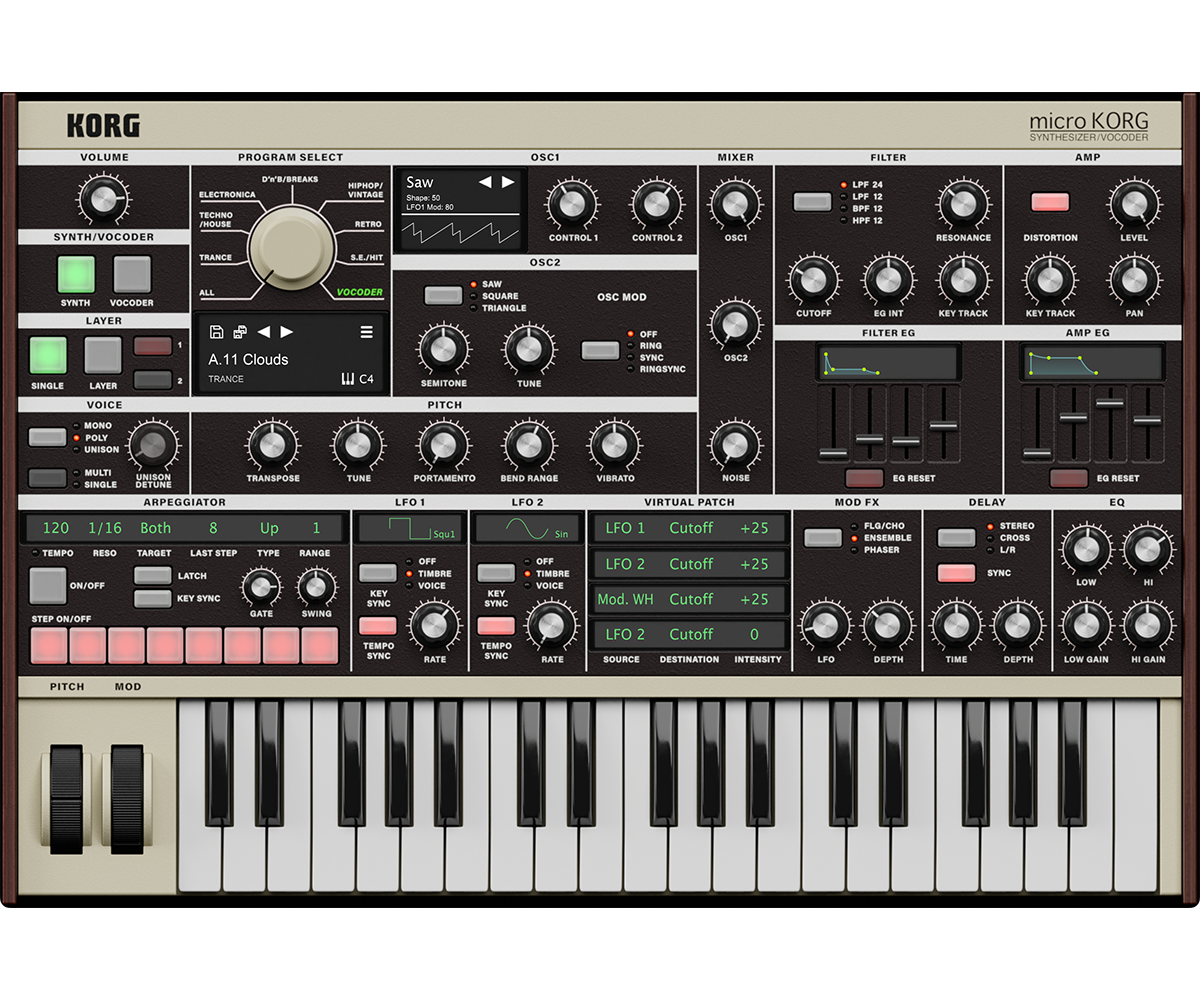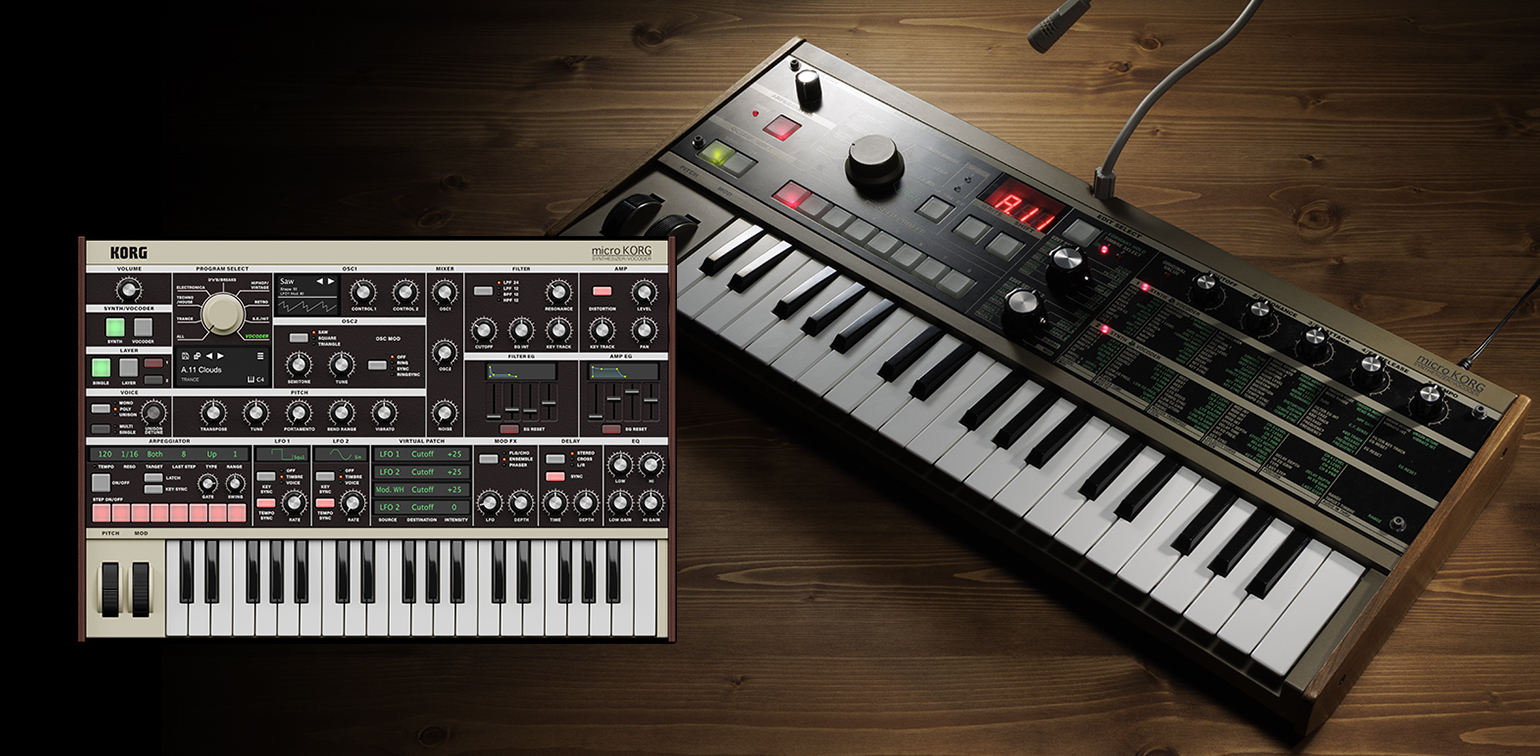
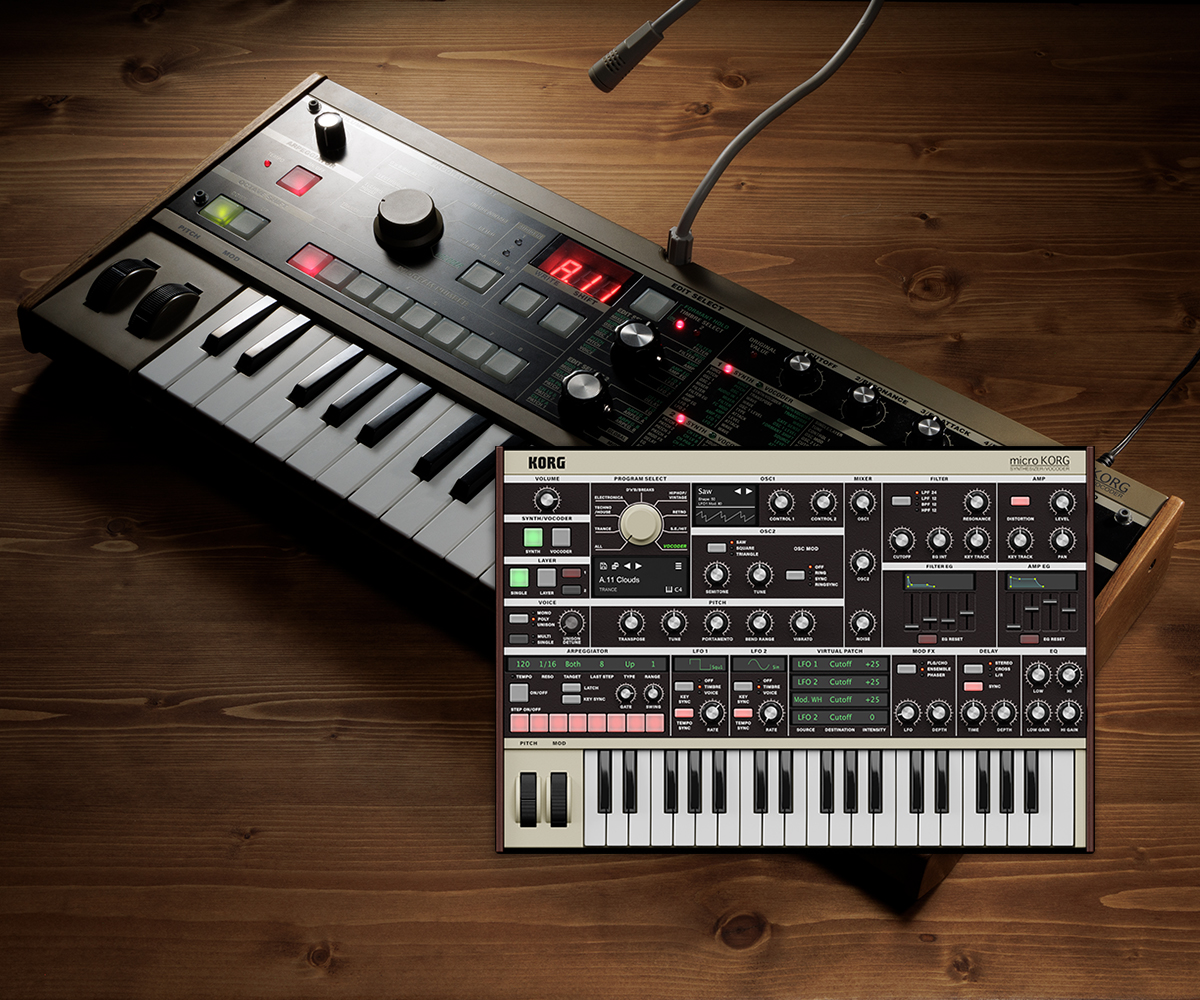

microKORG for Mac/Win
SYNTHESIZER / VOCODER
Support
Learn More
Korg’s best-selling synthesizer is now available
in software - the microKORG plug-in version for Mac/Win!
Since its release in 2002, the microKORG has been loved by more musicians around the world than any other hardware synth in music history. Following the first generation microKORG, a number of variations were introduced, including the microKORG XL released in 2009 and the microKORG S with 2+1 speakers, as well as many color variations.
The microKORG was born out of a desire to bring the appeal and fun of synthesizers to beginner and professional musicians, track makers, and creators everywhere. Korg easily achieved this goal,creating a wildly successful synthesizer that was not only compact andeasy to use but sounded amazing.
To celebrate the 20th anniversary of its release, the original "microKORG" will be reintroduced as software: microKORG for Mac/Win.
- A full-fledged synthesizer with a modeled analog sound.
- Oscillator section with a variety of waveforms.
- Vocoder with a wide variety of functions
- Built-in programs are available for the original "microKORG" and "microKORG S".
- GUI that pursues the ease of use with all the benefits that software provide.
- A free demo version is also available.
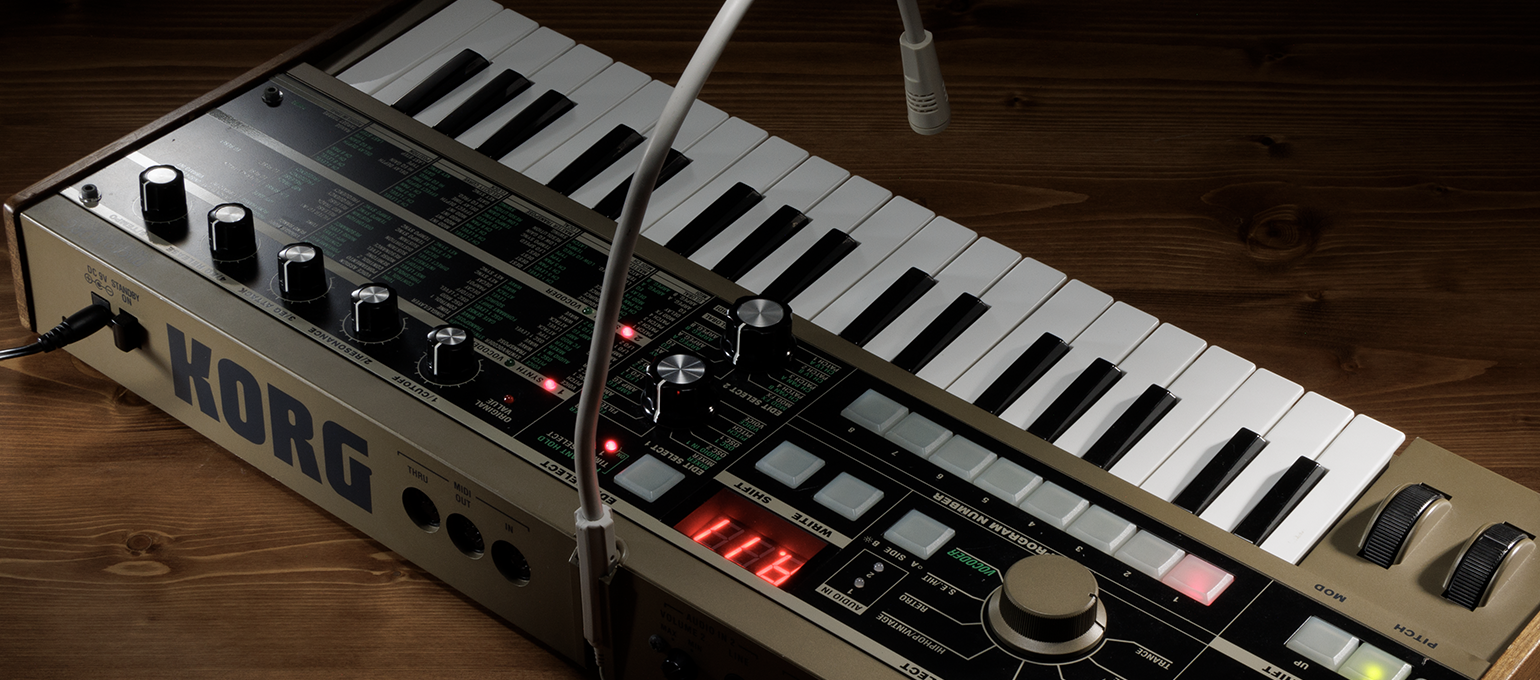
A full-fledged synthesizer with a modeled analog sound
"microKORG for Mac/Win" fully recreates the sound, behavior, and look of the original "microKORG". It reproduces not only the analog modeling oscillator, filter, and amp sections, but also the effects section and arpeggiator. The vocoder function, which was one of the main features of the original "microKORG," has also been reproduced.
Oscillator section with a variety of waveforms.

In the oscillator section, which is the basis of tone, two oscillators can be used per voice. Oscillator 1 has 8 built-in waveforms, including sawtooth wave, square wave, and audio input, and you can also select the DWGS waveform, which has 64 built-in waveforms. Each waveform can be processed with the two [CONTROL 1/2] knobs (DWGS is waveform selection only) for even more versatile sound creation. Oscillator 1 also has an oscilloscope that displays waveform changes in real time. Oscillator 2 contains only the basic waveforms of sawtooth, square, and triangle waves, and can also perform oscillator-to-oscillator modulation such as ring modulation, cross modulation, and hard sync.
Filter section for processing sounds, Amp section that controls the volume.
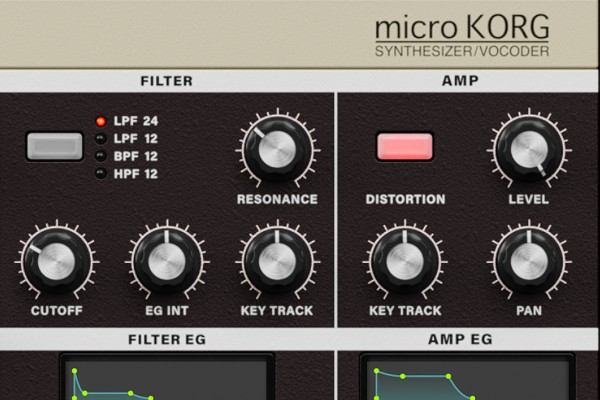
The sound from the oscillator goes through the mixer and then into the filter section. The filter section incorporates four types of filters, allowing the sound from the oscillator to be processed as desired. The low-pass filter also has a sharp 24dB mode.
After passing through the filter, the sound enters the amplifier section. Here you can adjust the overall volume as well as panning and key tracking. A distortion switch is also provided for extreme distortion of the sound.
An envelope that controls the temporal variation of sound.
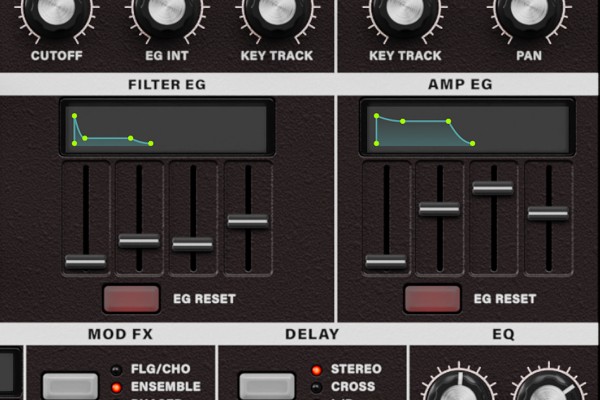
The change from the beginning to the end of a sound can greatly change its character. For example, some sounds appear and disappear quickly, while others are heard slowly and have a long reverberating sound. Envelope generators are used to create such temporal changes in sound. microKORG for Mac/Win" has one envelope for the filter and one for the amplifier. The envelope itself is an easy-to-understand ADSR 4-stage type. There is also a display on the envelope slider that shows the shape and progression of the envelope, making it even easier to understand.
LFO that creates periodic changes in sound.

There are two built-in low frequency oscillators (LFO) that can be used for vibrato, wah, tremolo, etc. LFO 1 offers sawtooth, square 1, triangle, and sample & hold (random) waveforms, while LFO 2 has sawtooth, square 2, sine, and sample & hold available for a total of four waveforms each. The KEY SYNC switch can also be used to turn waveform restart on/off during note on, LFO polyphonic operation, and so on. Of course, the LFO cycle can also be tempo-synchronized.
Virtual patching for exploring deep sound creation.
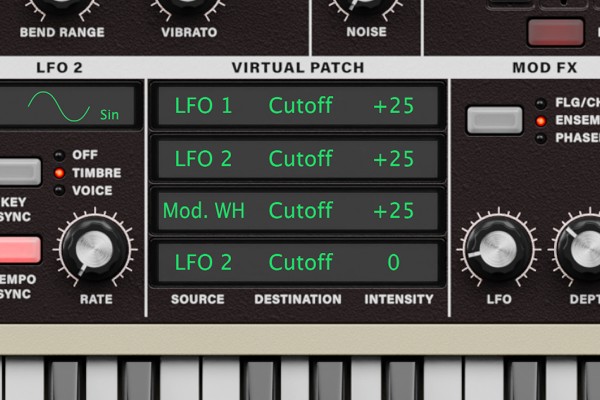
An additional fun aspect of sound creation is modulation, in which sections of the synthesizer are connected to each other to change their behavior. Like the original "microKORG", "microKORG for Mac/Win" allows you to set up four modulation routings (modulation connections). 8 different modulation sources and destinations can be connected to each other, and the modulation depth can be set. By connecting 8 different modulation sources and destinations, you can immerse yourself in a world of even deeper sound creation.
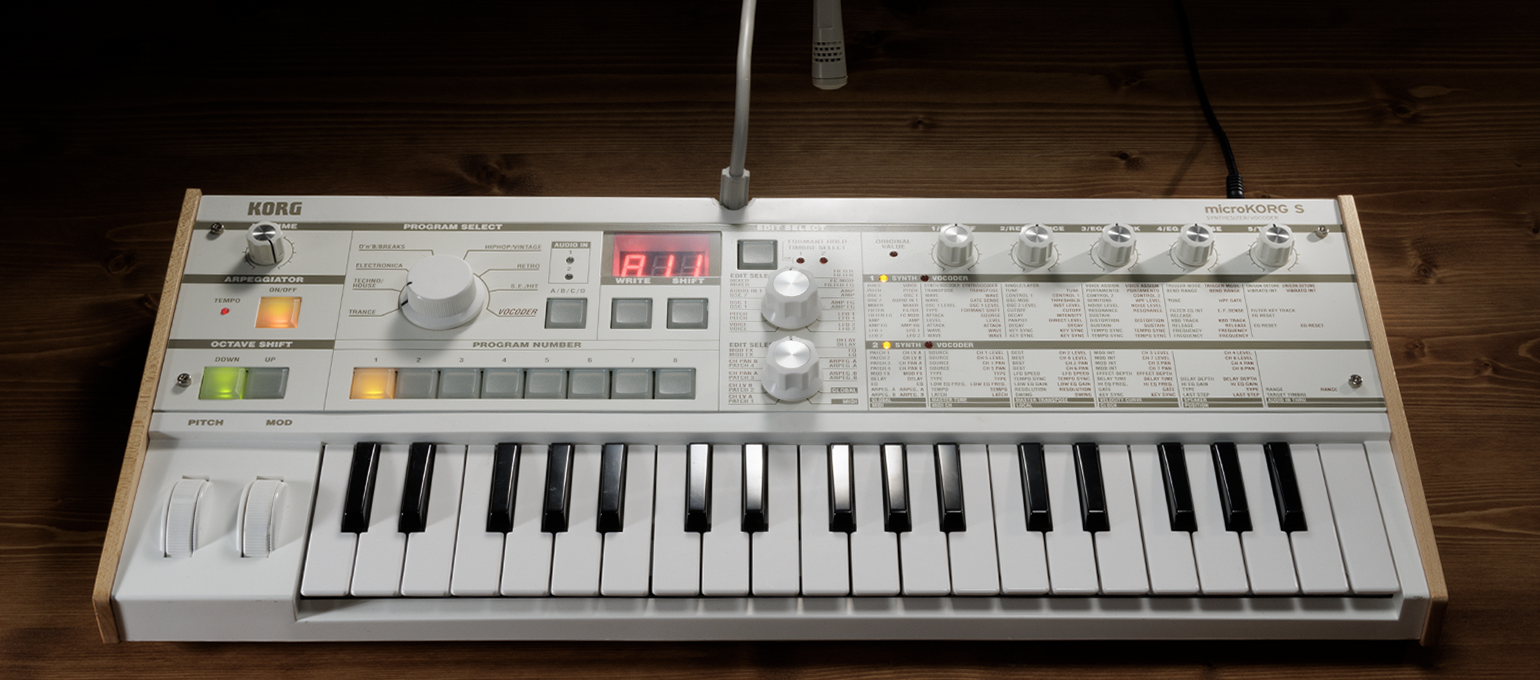
Vocoder with a wide variety of functions.
The vocoder function synthesizes the sound input to AUDIO IN and the sound of Oscillator 1 to create the effect of speaking.
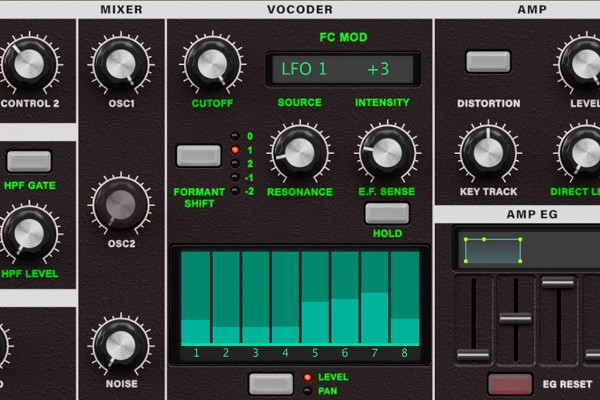
The vocoder function of "microKORG for Mac/Win" consists of 8 bands (2 out of 16 bands in a set), and it not only produces the vocoder sounds of the past, but also allows you to adjust the filter frequency, modulate, shift the entire filter bank up and down, and adjust the level and panning of each band to create your own unique vocoder sound. The level and panning of each band can also be adjusted to create unique vocoder sounds. Also, by clicking the HOLD button, you can record the formant of the input audio and use it as the sound source. In addition, the level of each band of the input voice and the level and panning of each band of the vocoder itself are displayed graphically, providing an easy-to-understand operation system that can only be achieved with software.
Flexible and fun Arpeggiator.
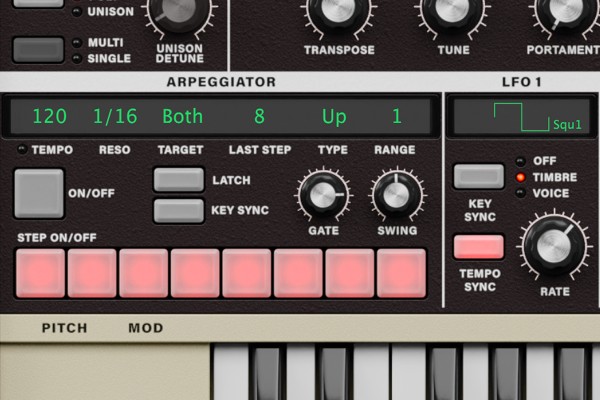
The arpeggiator can be used in both synth mode and vocoder mode. When a chord is played, its component notes are played one by one in sequence to create a dispersed chord. The arpeggiator has six built-in patterns, including up, down, random, and triggered patterns, and a variety of arpeggio patterns can be created by setting the octave range, resolution, and number of steps. The step can also be switched on and off, allowing you to freely change the rhythm of the arpeggio. In addition, in synth mode, you can also select the timbres that play the arpeggio, so when two tones are layered, the arpeggio can be overlaid on a pad tone.
Effects section with 2 effects and EQ
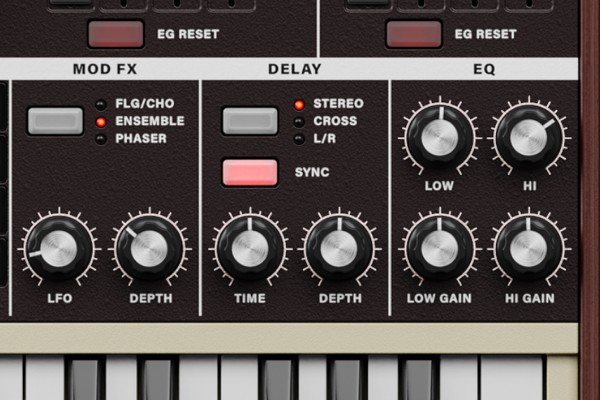
As with the original "microKORG," the effects section has two units: modulation effects and delays. The modulation system has three types: flanger/chorus, ensemble, and phaser, while the delay has three built-in types: stereo, cross, and L/R. The EQ is also 2-band with variable frequency, useful for finalizing the sound.

GUI that pursues the ease of use with all the benefits that software provide.
"microKORG for Mac/Win" retains the appearance of the original "microKORG" while adopting a graphical user interface designed for ease of use as software. While the original version used two rotary switches and five knobs for editing operations, the software version displays all parameters and allows the user to see the various overall tone settings. Each section also has additional convenient and easy-to-use functions unique to the software. For example, oscillator 1 has an oscilloscope that displays the waveform of the sound being played as well as the waveform of the selected waveform, the CONTROL knob displays the parameter name and its value in a tooltip, and the two envelopes have displays that allow you to visually check the shape and progress of the envelopes. The various settings of the arpeggiator, LFO waveforms, and virtual patches are also displayed, allowing you to see everything at a glance. In vocoder mode, there is a built-in display that shows the oscilloscope display of the audio input, as well as the level and panning of each band, and the band-specific level of the input audio.
The number of voices has been greatly expanded to a maximum of 64 voices, and the 2-timbre layered tones are even easier to use than the original.
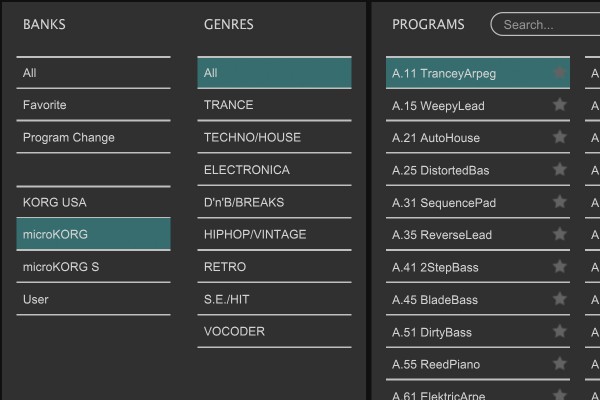
A total of 192 built-in programs are available for the original "microKORG" and "microKORG S". Clicking on a program name opens the Program Browser, which allows you to select presets by model (microKORG or microKORG S) or by music genre, as well as to search for programs, register programs as favorites, and map program changes.
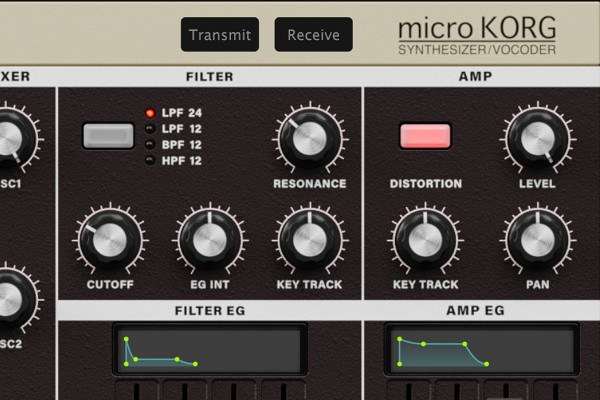
In addition, clicking on the "hamburger menu" to the right of the program name display opens a global menu that allows you to import and export program data, select screen size, and choose skins for past color variations and models. You can also select skins for previous color variations of the model. In addition, by connecting an actual "microKORG" or "microKORG S" device via MIDI, tone data can be sent and received directly in the same way as with the "microKORG Editor" tone editor/librarian software Send/Receive Mode" is also built in.

Try the demo version first!
The KORG Collection is available as a free demo version* that offers all synthesis functions for free as a trial. Get a glimpse of the possibilities before buying.
* KORG ID account is required.
* The software can only be used for 20 minutes at a time.
* The ability to save edited programs is disabled.
Included in the KORG Collection.
microKORG for Mac/Win is included in the KORG Collection 4 - Full Version. The Full Version of 14 pieces of KORG software. All at once you will be able to get the famous analog machines that laid the groundwork for the synthesizer as an instrument in the 1970s and early 80s, as well as the well-known digital machines that changed the history of music in the late 1980s and 2000s.






